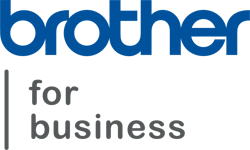Scaling Smart: How DSOs Can Balance Cost, Efficiency, and Security
Key Highlights
- DSOs face rising costs, as well as staffing and operational challenges as they expand
- Secure, standardized document management drives efficiency and cost control
- Balancing paper and digital workflows enhances productivity and compliance
- Smarter procurement and supply strategies help reduce total cost of ownership
- Scalable technology supports sustainable growth across multiple practice locations
As Dental Support Organizations (DSOs) continue to grow—adding more dental practices, expanding across states and supporting larger patient volumes—one challenge rises to the top: how to scale efficiently while maintaining control over costs, workflows, and security across every practice.
In fact, managing technology and document workflows across dozens—or even hundreds—of practice locations is no small feat. IT leaders and administrators must juggle central oversight with local usability while keeping costs predictable and operations compliant. The good news? Many of the same disciplined, cost-conscious strategies used by large healthcare organizations can help DSOs thrive.
The Cost and Complexity of Scaling
Rising labor costs, supply chain pressures, and administrative inefficiencies are financially straining DSOs—much like hospitals and health systems. As a result, leaders are rethinking every category of operational expenses, including document management.
Too often, cost evaluations focus solely on upfront pricing rather than total cost of ownership (TCO)—the long-term combination of equipment, supplies, service and downtime. A device that appears inexpensive can quickly become costly due to frequent cartridge replacements, inefficient energy use, or inconsistent performance.
Smart DSOs take a strategic view of value, focusing on lifetime performance and scalability. The goal is not just to save money but to achieve predictable, sustainable efficiency across every location.
Standardization as a Growth Strategy
As DSOs integrate newly acquired practices or open new locations, they face the challenge of unifying disparate technology, systems and workflows under one efficient operational framework. Establishing enterprise-wide standards for document technology simplifies deployment, training and support. A standardized fleet ensures every office uses consistent, easily managed equipment.
Some organizations adopt a “Dental Office in a Box” model—a predefined technology package for each new or converted practice. This transforms forecasting into a repeatable, scalable process. For example, 50 new offices might require 50 color printers, 50 monochrome printers and 200 desktop scanners, allowing precise planning for procurement and IT teams.
Beyond efficiency, standardization also enhances staff experience. Familiar, intuitive device interfaces help reduce learning curves, minimize errors and promote consistent document handling practices across the organization.
Bridging the Paper-to-Digital Gap
Even as dental practices continue to adopt electronic health records (EHRs) and other digital tools, paper remains a part of everyday operations—from insurance cards and treatment plans to consent forms and referrals. The challenge isn’t eliminating paper altogether but bridging the gap between paper and digital workflows to efficiently move information across the organization.
For DSOs, this integration can significantly impact both productivity and oversight. When every dental office follows consistent document-handling processes, information flows seamlessly, reducing administrative bottlenecks and improving accuracy. With the right document management technology, routine tasks such as scanning, routing and digitizing files can be automated, converting paper documents into searchable digital records and allowing staff to dedicate more time to patient care.
By creating a consistent, connected workflow across practices, DSOs can streamline patient intake, billing and insurance processing while maintaining visibility into how information moves throughout the organization. The result is a more efficient, unified system that supports both clinical and administrative teams.
Security at Every Level
With multiple offices, shared devices and distributed teams, DSOs must think beyond network security as it relates to document technology. Device-level security—the ability to control who can print, scan, or access specific features—is critical.
In healthcare environments, security best practices include:
- Device locking and user authentication to prevent unauthorized access
- Pull-printing or PIN-based release to ensure sensitive print jobs aren’t left unattended
- Automatic document deletion to prevent residual data on shared devices
- Encrypted network transmission to protect scanned files in transit
These same safeguards apply directly to dental practices. As with hospitals and medical offices, vulnerabilities often arise from outdated systems or inconsistent processes. Strengthening device-level security, implementing user-based permissions and maintaining encrypted workflows help mitigate risk and facilitate HIPAA compliance across every location.
Driving ROI Through Smarter Supply Management
Supply costs can quietly erode profitability if left unmanaged. DSOs should track cost-per-page (CPP) instead of focusing on upfront cartridge pricing. For instance, a higher-yield toner may cost more initially but delivers exponentially lower CPP and fewer interruptions for replacements.
Choosing enterprise-level devices that support high-yield supplies helps reduce downtime, limits staff handling and extends equipment life. A robust warranty with an overnight exchange program further minimizes disruptions, ensuring continuity of service even when a device needs replacement.
These measures together extend the investment cycle, reduce waste and help stabilize budgets across a growing organization.
Scaling with the Right Partner
Behind every successful DSO is a network of reliable partners who understand the demands of scaling operations. As DSOs strive to balance growth with efficiency, selecting a document management technology partner that prioritizes security, scalability and cost control is essential.
The right partner can help standardize device fleets, simplify IT management and introduce automation that reduces administrative burden—so DSOs can focus on what matters most: supporting their dental practices and delivering excellent patient care. With extensive experience helping healthcare and dental organizations streamline workflows, Brother International Corporation provides secure, scalable and cost-efficient document management solutions. From device standardization to secure printing and advanced scanning tools, Brother empowers DSOs to optimize performance and operate smarter at every level.
Learn more at BrotherUSA.com

